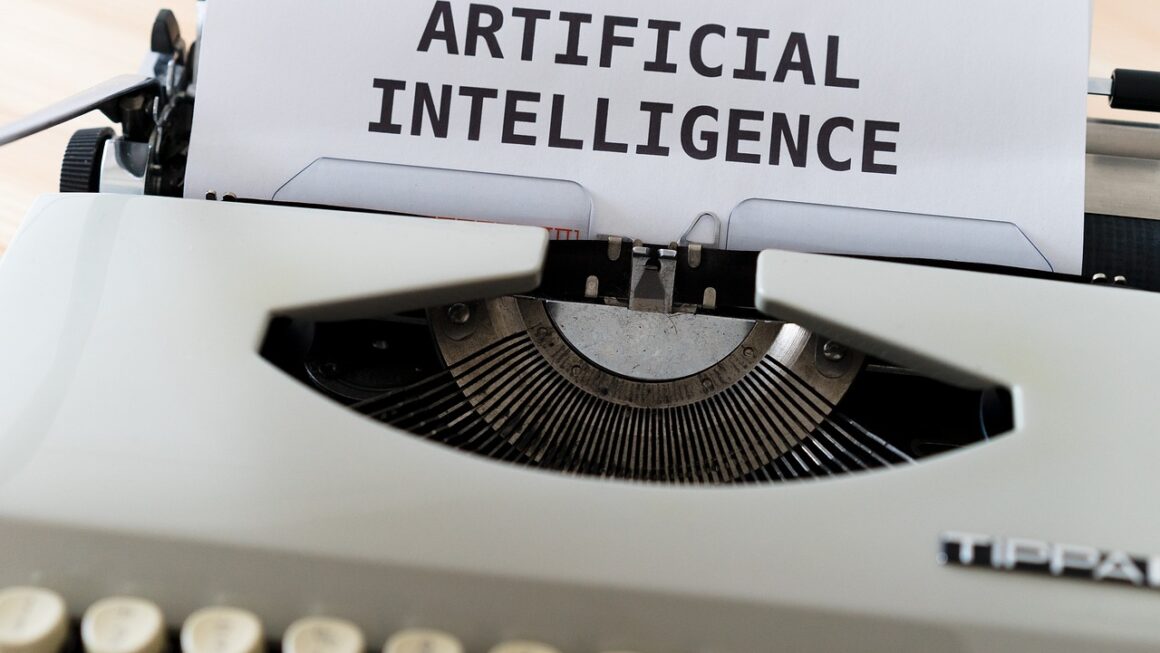Artificial Intelligence (AI) is rapidly transforming our world, from the recommendations we receive online to the complex systems driving self-driving cars. At the heart of this revolution lie sophisticated AI algorithms, the engines that power these intelligent systems. Understanding how these algorithms work, their various types, and their applications is crucial for anyone wanting to navigate the increasingly AI-driven landscape. This post will delve into the fascinating world of AI algorithms, providing a comprehensive overview of their key concepts, categories, and practical applications.
What are AI Algorithms?
Defining AI Algorithms
AI algorithms are sets of rules and statistical calculations designed to enable computers to learn from data, identify patterns, and make decisions with minimal human intervention. They differ from traditional algorithms in that they are not explicitly programmed to solve specific problems; instead, they are trained on data to develop their own problem-solving abilities.
- Core Function: Learn from data to make predictions or decisions.
- Adaptive Nature: Improve performance over time through experience.
- Key Component: The driving force behind all AI applications.
How AI Algorithms Work
AI algorithms typically work through a process that involves:
Example: Spam Detection
Imagine an AI algorithm trained to detect spam emails. The algorithm is fed thousands of emails, labeled as either “spam” or “not spam.” It learns to identify patterns, such as frequent use of certain keywords, suspicious links, or unusual sender addresses. Once trained, the algorithm can classify new emails as spam or not spam with a high degree of accuracy. This highlights the predictive and decision-making capabilities of AI algorithms.
Types of AI Algorithms
Supervised Learning Algorithms
Supervised learning algorithms learn from labeled data, where the desired output is known. They are used for tasks such as classification and regression.
- Classification: Categorizing data into predefined classes.
Examples:
Support Vector Machines (SVM): Effective for classifying complex datasets.
Naive Bayes: Simple and fast, often used in spam filtering.
Decision Trees: Easy to interpret, used for both classification and regression.
- Regression: Predicting continuous values.
Examples:
Linear Regression: Models the relationship between variables linearly.
Polynomial Regression: Models the relationship using polynomial functions.
Random Forest Regression: An ensemble method that averages predictions from multiple decision trees, improving accuracy and reducing overfitting.
Unsupervised Learning Algorithms
Unsupervised learning algorithms learn from unlabeled data, where the desired output is unknown. They are used for tasks such as clustering and dimensionality reduction.
- Clustering: Grouping similar data points together.
Examples:
K-Means Clustering: Partitions data into K clusters based on distance to cluster centroids.
Hierarchical Clustering: Builds a hierarchy of clusters by either iteratively merging or splitting clusters.
DBSCAN (Density-Based Spatial Clustering of Applications with Noise): Identifies clusters based on data point density, separating noise or outliers from the clusters.
- Dimensionality Reduction: Reducing the number of variables in a dataset while preserving important information.
Examples:
Principal Component Analysis (PCA): Transforms data into a new coordinate system where the first principal component captures the most variance, followed by subsequent components.
t-distributed Stochastic Neighbor Embedding (t-SNE): Reduces dimensionality while maintaining the similarity structure of the data.
Reinforcement Learning Algorithms
Reinforcement learning algorithms learn through trial and error, receiving rewards or penalties for their actions. They are used for tasks such as game playing and robotics.
- Key Concepts:
Agent: The learner or decision-maker.
Environment: The world in which the agent operates.
Actions: The choices the agent can make.
Rewards: Feedback from the environment, indicating the desirability of an action.
- Examples:
Q-Learning: Learns an optimal policy by estimating the Q-value, which represents the expected cumulative reward of taking a specific action in a specific state.
Deep Q-Networks (DQN): Combines Q-learning with deep neural networks to handle complex state spaces.
Key Applications of AI Algorithms
Healthcare
AI algorithms are revolutionizing healthcare in numerous ways.
- Diagnosis: AI can analyze medical images (X-rays, MRIs) to detect diseases earlier and more accurately than humans.
- Drug Discovery: AI accelerates the drug discovery process by identifying potential drug candidates and predicting their efficacy.
- Personalized Medicine: AI can analyze patient data to tailor treatment plans to individual needs.
Example: IBM Watson Oncology assists oncologists in making treatment decisions by providing evidence-based recommendations.
Finance
The financial industry leverages AI algorithms for various applications.
- Fraud Detection: AI identifies fraudulent transactions in real-time.
- Algorithmic Trading: AI executes trades based on market conditions and predefined rules.
- Risk Management: AI assesses and manages financial risks.
Example: Banks use AI to predict creditworthiness and detect money laundering activities.
Marketing
AI algorithms are used to personalize marketing campaigns and improve customer engagement.
- Targeted Advertising: AI analyzes user data to display relevant ads.
- Chatbots: AI-powered chatbots provide customer support and answer inquiries.
- Recommendation Systems: AI suggests products or services based on user preferences.
Example: E-commerce platforms like Amazon use AI to recommend products to users based on their browsing history and purchase behavior.
Transportation
AI is transforming the transportation industry with self-driving cars and optimized logistics.
- Autonomous Vehicles: AI algorithms enable cars to navigate roads and avoid obstacles without human intervention.
- Route Optimization: AI optimizes delivery routes to reduce travel time and fuel consumption.
- Traffic Management: AI manages traffic flow to reduce congestion.
* Example: Tesla’s Autopilot system uses AI to assist drivers with lane keeping, adaptive cruise control, and automatic emergency braking.
Challenges and Considerations
Data Quality
The performance of AI algorithms is highly dependent on the quality of the data they are trained on.
- Data Bias: Biased data can lead to biased AI models, which can perpetuate unfair or discriminatory outcomes.
- Data Volume: AI algorithms often require large amounts of data to achieve high accuracy.
- Data Preprocessing: Cleaning and preparing data for training is a crucial step in the AI development process.
Explainability and Interpretability
Many AI algorithms, especially deep learning models, are “black boxes,” meaning it is difficult to understand how they arrive at their decisions.
- Transparency: Lack of transparency can make it difficult to trust AI models, especially in high-stakes applications.
- Interpretability: Efforts are being made to develop more interpretable AI models and techniques for explaining AI decisions.
- Accountability: Understanding how AI models work is essential for ensuring accountability and addressing any potential biases or errors.
Ethical Implications
The use of AI raises a number of ethical concerns.
- Privacy: AI can be used to collect and analyze vast amounts of personal data, raising concerns about privacy violations.
- Job Displacement: Automation powered by AI could lead to job losses in certain industries.
- Bias and Discrimination: AI models can perpetuate existing biases and discrimination.
Conclusion
AI algorithms are the backbone of modern AI systems, enabling computers to learn, reason, and make decisions in ways that were once thought impossible. From healthcare and finance to marketing and transportation, AI algorithms are transforming industries and improving our lives. Understanding the different types of AI algorithms, their applications, and the challenges associated with their use is essential for navigating the rapidly evolving AI landscape. As AI continues to advance, it is crucial to address the ethical considerations and ensure that AI is used responsibly and for the benefit of humanity. By staying informed and embracing the potential of AI algorithms, we can unlock new possibilities and create a more intelligent and efficient world.




